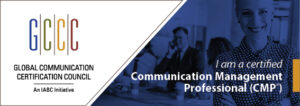In a noisy world that has become the norm, it is more and more difficult to have our organizations’ messages heard above all the racket.
Some organizations are succeeding, while others hope that they’ll see some results when their messages “go viral.” Many organizations are adopting the latest–and seemingly greatest–technology for broadcasting their messages–resulting in a game of “cat and mouse.”
Raising the bar on getting results from your marketing and communication programs is a reasonable expectation. But before you commit to remarkable outcomes, do you know if your organization has answered these two important questions?
- Does my organization have solid principles in place for our communication programs?
- Does everyone in my organization, starting at the top, understand these principles and practice them each and every day?
What Makes a Solid Foundation?
A few simple, yet important principles can provide a solid foundation.
- A commitment to communication: It may seem basic and logical, but it’s surprising to see organizations large and small that pay only lip service to communication. As the very famous author and playwright, George Bernard Shaw once said:
“The single biggest problem in communication is the illusion that it has taken place.” —George Bernard Shaw
- A focus on quality and consistency: Creating programs that are of the highest quality on a consistent basis is important for success. Consistency is key; however, quality is what will allow you to see positive results over the long term. Quality will foster itself when your organization can articulate what purpose it serves and what problems it solves. Think about that: What purpose do you serve? What problems do you solve?
- A commitment to educating and informing: Gone are the days of the hard sell. Today, buyers have endless options, have loads of information at their fingertips and are well informed. Generally speaking, your communication programs will be better received (and likely provide better results) if they focus on educating and informing versus selling and self-promotion.
- A genuine and reliable voice: Finding your organization’s authentic voice–and incorporating it into your communication programs–can build stakeholders’ faith in your organization quickly. Faith in your organization will result in a strong brand.
- Visually engaging: Because we’re visual creatures, another important principle of good communication programs is to develop campaigns that are engaging and capture your readers’ attention. Visuals can contribute to a strong identity. Don’t settle for poor quality visuals after all your hard work and investment in the other foundational principles.
As Jay Baer explains in his book, Youtility (I recommend you read it), “There are only two ways for companies to break through in an environment that is unprecedented in its competitiveness and cacophony. They can be ‘amazing’ or they can be useful.”
Build the brand you want by basing it on a solid foundation of good communication principles. It’s not only a recipe for success; it’s simply the right thing to do.
Good luck!
What do you think of these foundational principles for creating positive change communication programs? How well does your organization practice these principles? Please comment or reach out to me; I’d love to hear your thoughts.






